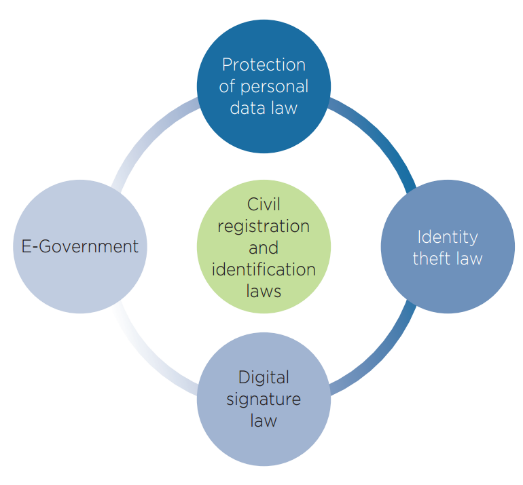Overview
In order to identify appropriate CRVS technologies that are feasible in the current context, it is important to understand what opportunities and limitations exist in-country to support a digital CRVS system. These opportunities will later be used to inform the definition of the target digital CRVS system and processes.
Steps:
1
Assess the current physical and technical infrastructure available in-country and how it can be used to support a digital CRVS system, consulting stakeholders with technical knowledge within both the government and private sector.
- What physical and technical infrastructure exists for CRVS e.g. Office buildings, computers, printer/scanners, internet connectivity, electricity?
- What physical and technical infrastructure exists across the country e.g. electricity, internet connectivity, data centres, mobile phone networks and coverage?
- What e-Government technical infrastructure exists e.g. data centres, shared services, cloud computing, system integration platforms?
- What is the rate of mobile phone penetration and on which type of devices (e.g. smartphone, feature phone)?
2
Identify and assess current human capacity to build, maintain and use digital CRVS systems.
- What government capacity exists to build and/or maintain a digital CRVS system?
- What private sector capacity exists to build and/or maintain a digital CRVS system?
- What is the current capacity of CRVS staff to use digital systems in their day-to-day job?
- Who are the potential actors that could perform new roles within the registration process e.g. community based registration, social welfare programmes?
- How do citizens perceive the use of digital technologies for capturing personal information?
3
Identify and assess existing initiatives that might inform the design of the digitised CRVS system.
- What digital projects are being implemented by other ministries or departments which have synergies with CRVS e.g. mHealth application being used to register mothers and newborns?
- What digital projects for CRVS are being piloted by non-government organisations e.g. data collection tool being used to monitor vital event registration?
4
Identify and assess system integration opportunities.
- What is the perceived necessity and potential to integrate digitised CRVS within the broader eGovernment systems landscape e.g. health systems, education systems, population registers, national identity systems and statistics systems?
- What systems have the potential to be a source of vital event information e.g. health registration, school enrolment systems?
- What data is already being captured (manually or digitally) for purposes other than civil registration that closely resembles vital events data e.g. vaccination records of infants?
5
Assess what legal changes are required to support a digitised CRVS system.
- Assess the existing legislative and policy landscape, considering whether it supports digital CRVS systems and processes.
- Identify legal and policy changes required to support and facilitate digitised CRVS systems and processes. Consider all elements identified in the Elemental Legal Framework for the Civil Registry (UNICEF, 2015).

Elemental Legal Framework for the Civil Registry
6
For each of the business requirements defined in the CRVS Business Architecture, consider the opportunities and limitations identified above to determine:
- Which requirements can be addressed through the use of digital technologies?
- Which requirements cannot be addressed through technology, but demand other responses e.g. increasing awareness through the use of a communications campaign? These requirements should be fed into the CRVS strategic planning process.




